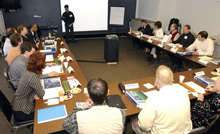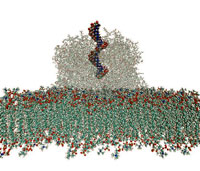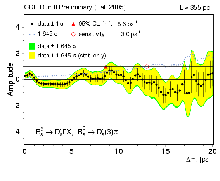 | Thursday, November 3, 2005 |
|
Thursday, November 3
Friday, November 4 |
|
Extended Forecast |
Secon Level 3 |
|
Thursday, October 27 -Southwestern Chicken Tortilla -Philly Style Cheese Steak -Chicken Pot Pie -Tomato Basil Chicken Parmesan -Southwestern Turkey Wrap -4 Cheese Pizza -Marinated Grilled Chicken Caesar Salads The Wilson Hall Cafe accepts Visa, Master Card, Discover and American Express at Cash Register #1. |
|
Thursday, November 3 Dinner BOOKED
Wednesday, November 9
Chez Leon Menu |
| Fermilab Today is online at: http://www.fnal.gov/today/ Send comments and suggestions to today@fnal.gov Fermilab Today archive Hurricane Relief Page Fermilab Today PDF Version Fermilab Result of the Week archive Fermilab Safety Tip of the Week archive Linear Collider News archive Fermilab Today classifieds Subscribe/Unsubscribe to |
| Community Group Discusses International Linear Collider | ||
|
Members of the Fermilab Community Task Force on Public Participation met Tuesday evening to discuss issues related to the proposed International Linear Collider, and its potential impact on Fermilab and the community. Doug Sarno of The Perspectives Group, the Alexandria, Va. consulting firm that guided the CTF efforts throughout 2004, is acting as facilitator. "There are many social issues to discuss, as we work on how to develop a really robust plan for public participation with the ILC process," Sarno said at the group's organizational meeting, held Tuesday night, November 1, in Wilson Hall. The Department of Energy has said that if the ILC were to be built in the U.S., the Northern Illinois area around Fermilab would be the preferred location. Sites in Asia and Europe will also be considered by the ILC Global Design Effort. Vic Kuchler, head of Fermilab's Facilities Engineering Services Section, described the geological requirements of a machine that would be super-sensitive to vibration. Bob Kephart, newly-appointed program director for the ILC at Fermilab, offered the science case for the ILC, which could address some of the most compelling open questions in science today, including extra dimensions, dark energy and dark matter. Fermilab director Pier Oddone stressed the need for early public involvement with the ILC, while pointing to the collider's lengthy timeline. "The earliest date for breaking ground would be around 2012," Oddone said. "So it's not as if the bulldozers are waiting around the corner."
The CTF subcommittee meets again on Tuesday, November 15, at 6 p.m. in Wilson Hall. Meetings are open to the public. More on the Community Task Force.
|
SPICE-ing Up DNA Simulations
Jha collaborates in the SPICE—
Simulated Pore Interactive Computing Environment—project, which uses the RealityGrid Steering Library and associated middleware to run interactive simulations on the UK's National Grid Service and TeraGrid in the U.S. The simulations are unique; instead of a one-way flow of simulation data from supercomputer to remote visualization resource, the scientist also uses the visualization to steer the simulation. The bi-directional data flow is made more challenging when the simulation and visualization resources are located hundreds, or even thousands, of miles away.
|
|
Fermilab Media Advisory, November 2, 2005: Media invited to attend Pierre Auger Observatory Celebration, to be held November 9-12, 2005 in Malargüe, Argentina BATAVIA, Illinois-Scientists of the Pierre Auger Observatory, a project to study the highest-energy cosmic rays, will hold a celebration to mark the first physics results and progress on the nearly-completed detector array in Malargüe, Argentina, from November 9 to November 12, 2005. Media representatives wishing to attend should make arrangements as soon as possible, and should begin by contacting Rosa Pacheco at the Pierre Auger Southern Observatory (+54 2627) 471 562, email: augercelebration@auger.org.ar. Sign-up through the Web site is also available at www.interactions.org/auger/.
The Pierre Auger Observatory is exploring the mystery of high-energy cosmic rays--charged particles showering the earth at energies above 1019 electron volts, about 10 million times higher than the world's highest-energy particle accelerator, the Tevatron at Fermilab. There is no scientific consensus on the origin of these highest-energy cosmic rays. To witness these extremely rare events, the observatory is constructing an array of 1600 detectors spread over 3000 square kilometers in Argentina's Mendoza Province, just east of the Andes Mountains. Each detector contains 3000 gallons of water. The detector array covers an area approximately the size of the state of Rhode Island in the United States. The Observatory collaboration includes more than 370 scientists and engineers from 60 institutions in 16 countries, and the construction cost of approximately $50 million has been shared by the participating countries.
|
| Pushing the World Limit: B Flavor Oscillations at CDF |
||
|
B0s mesons consist of a strange quark and an anti-beauty quark. The weak nuclear force can cause B0s mesons to transform to their antiparticle and back. These transformations are called "flavor oscillations" or "mixing," and the frequency of these oscillations is referred to as "Delta ms", which is the experimentally measured mass difference between the light and heavy states of the B0s meson. There is convincing experimental evidence that B0s mesons undergo flavor oscillations, but the frequency of these oscillations is so fast that it has not yet been possible to observe them directly. Instead it has been possible to establish a lower limit on Delta ms; it is 95 percent probable that the B0s flavor oscillation frequency is larger than this lower limit. Establishing larger lower limits further restricts possible values of Delta ms and represents important progress in our understanding of B0s flavor oscillations. The measurement of Delta ms is one of the flagship analyses of Run II of the Tevatron at Fermilab because it provides important unique information about the weak interaction and may lead to the indirect discovery of new fundamental particles. CDF has presented its first Run II analysis in Spring 2005, which set a lower limit on Delta ms. Using the same data set that was used in this first analysis, CDF physicists implemented several refinements in the analysis technique, and on October 25, CDF revealed a much improved Run II result on B0s mixing at the PANIC Conference in Santa Fe, NM. This completes a second round of the analysis, one of the largest analysis efforts in CDF, with contributions from more than 70 physicists (including 26 graduate students) from 26 institutions. More information about this analysis effort can be found in a recent result of the week. The improvement in the analysis is reflected in the increase in the expected lower limit or "sensitivity" on the mixing frequency from the data, which has grown from 8.4 trillion Hertz to 13.0 trillion Hertz. The CDF sensitivity is now the second largest in the world from a single experiment. More important, when combined with measurements from other experiments, the combined expected limit increases significantly, from 18.1 trillion Hertz to 19.6 trillion Hertz. Physicists at CDF are continuing to squeeze the data and further major improvements are anticipated. The Tevatron is producing world record luminosity and new data are now available, which will more than double the statistics of the data set used for the current analysis. With these further improvements and additional data, CDF will explore values of Delta ms that may reveal the first signs of a direct observation.
|
||
| ||
| Result of the Week Archive |
|
October 31 - November 2 - Two stores provided 34 hours and 38 minutes of luminosity. - Store 4477 set a Record Luminosity of 164.17E30. - ICW leak at CDF. - Store 4477 quenched on termination.
Read the Current Accelerator Update
|
|
Veteran's Day Celebration
Bench Dedication Anyone who would like to remember Sue and her contributions to the lab, NALWO and the community, is invited to an informal ceremony to dedicate this special bench. It will be held in front of the Lederman Center, at 1 p.m. on Tuesday, November 8. In case of rain, the dedication will be postponed to 1 p.m. Thursday, November 10.
International Folk Dancing
|



